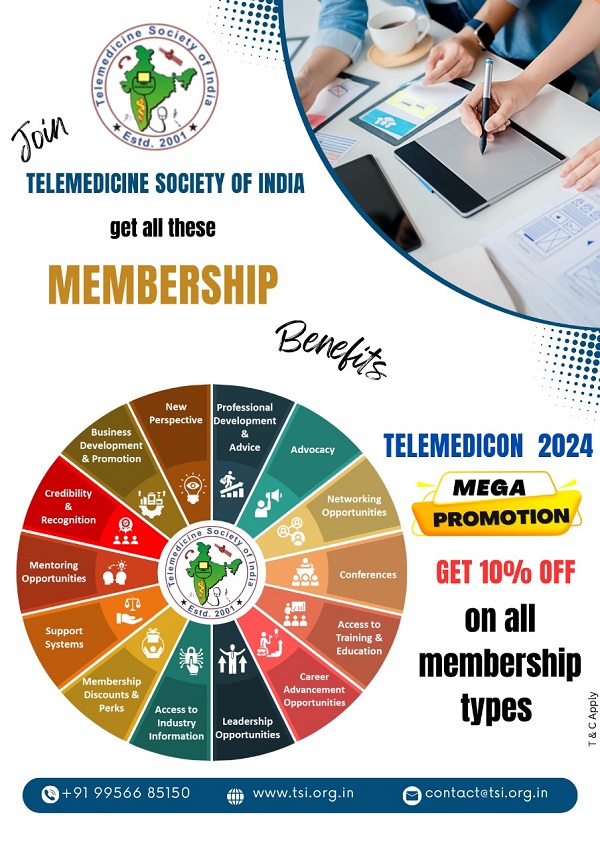Telehealth Newsletter
Official Newsletter of Telemedicine Society of India

What is New?
On June 21st, executives from TSI traveled to Dharamsala in Himachal Pradesh for the mid-term meeting and CME organized by the state chapter. Dharamsala, truly a paradise, rejuvenated us with its fresh air, complemented by the warm hospitality of the TSI state chapter members.
This newsletter features a report from the meeting. We’ve introduced a new section called “Get to Know Your Member,” starting with a short video link featuring Dr. (Col.) Rita Dadwal, Vice President of TSI’s Himachal Pradesh State Chapter. Watch her inspiring story and share your feedback with us. We eagerly await similar contributions for future issues.
Early bird registration for TELEMEDICON2024 is now open at telemedicon2024hp.com. Start planning and register for the conference today.
Congratulations to Saurabh Bothra of Habuild for achieving a world record on World Yoga Day!
Thank You
Dr. Sunil Shroff
Chief Editor
Vice President, TSI
::Mid Term Meeting & CME of TSI at Kangra, HP - 21st June 2024::
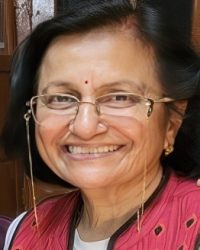
TSI-Himachal Pradesh State CME 2024 on Telemedicine in Himalayas
Dr. (Col.) Rita Dadwal
Vice President, TSI- Himachal Pradesh State Chapter | Co-Organising Secretary- Telemedicon 2024, Dr. RPGMC Kangra at Tanda
The Telemedicine Society of India, Himachal Chapter, proudly hosted a Continuing Medical Education (CME) event focused on “Telemedicine in Himalayas: Bridging Gaps and Creating Opportunities.” This event aimed to explore the transformative impact of telemedicine in remote Himalayan regions, addressing challenges and unlocking new possibilities in healthcare delivery.
We delved into the intricacies of how telemedicine can revolutionize healthcare in one of the most remote and challenging terrains on earth. We discussed the remarkable potential of telemedicine to bridge geographical gaps, enhance access to medical expertise, and ultimately improve health outcomes for the communities in these remote areas.
Our discussions reinforced the importance of collaboration, innovation, and unwavering commitment to this cause.
Let us continue to work together, leveraging the insights and strategies we have shared, to bring about a healthcare revolution in the Himalayas. By doing so, we can ensure that even the most remote communities receive the care they need and deserve.
I thank all the participants for your dedication, and your passion for advancing healthcare through telemedicine. Together, we can bridge the gaps and create new opportunities for a healthier, more connected Himalayan region.

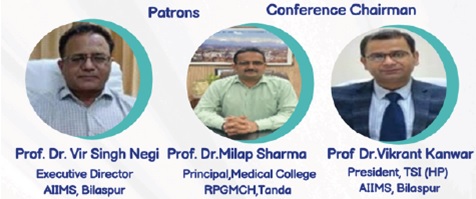
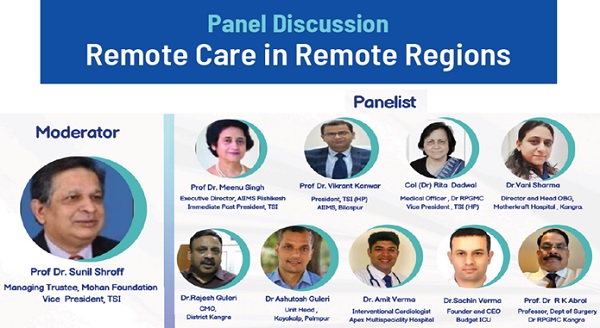
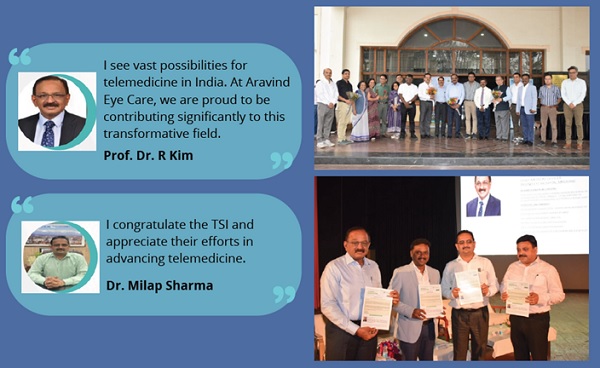
Budget ICU: North India’s Largest ICU Network
(Educational Grant for the Meeting)
The success of this CME event was significantly bolstered by the generous support and pivotal role played by Budget ICU. They provided an ‘Educational Grant’ for the meeting and demonstrated a strong commitment to advancing healthcare access in challenging terrains like the Himalayas. Their contribution ensured the event’s seamless execution and enriched the discussions around leveraging telemedicine solutions effectively.
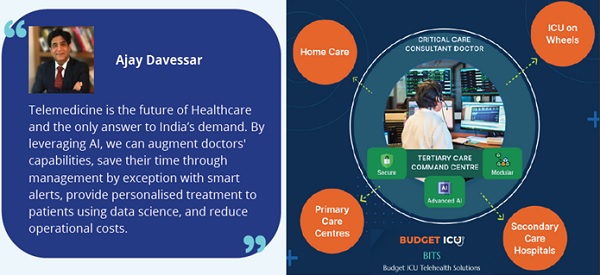

Highlights and Key Discussions
The CME event featured insightful presentations and discussions by leading experts in telemedicine, healthcare administrators, and policymakers. Key topics included:
Challenges in Healthcare Delivery: Addressing the unique challenges faced in providing healthcare services in remote Himalayan regions.
Role of Telemedicine in Bridging Gaps: Exploring how telemedicine can bridge geographical barriers, improve access to specialist care, and enhance patient outcomes.
Technological Innovations: Showcasing innovative telemedicine solutions tailored for mountainous and remote areas, emphasizing scalability and sustainability.
Community Engagement: Strategies to empower local communities, healthcare providers, and policymakers in adopting and benefiting from telemedicine technologies.
Looking Ahead
The success of this CME underscores the growing importance of telemedicine in transforming healthcare delivery, particularly in challenging geographic settings like the Himalayas. As the Telemedicine Society of India, Himachal Chapter, continues to advocate for accessible and equitable healthcare solutions, we look forward to future collaborations and initiatives that will further strengthen healthcare infrastructure across.
Glimpses of the event
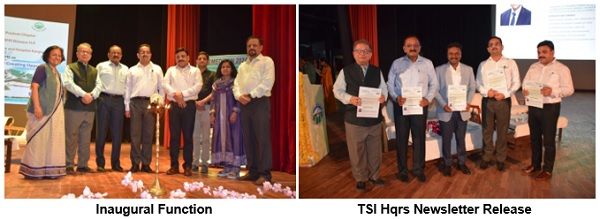
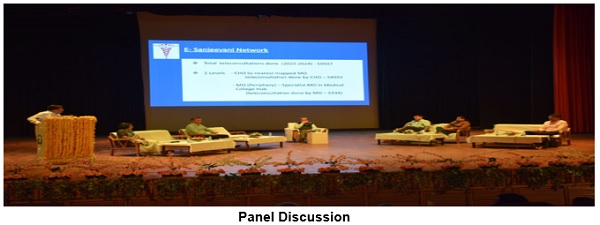

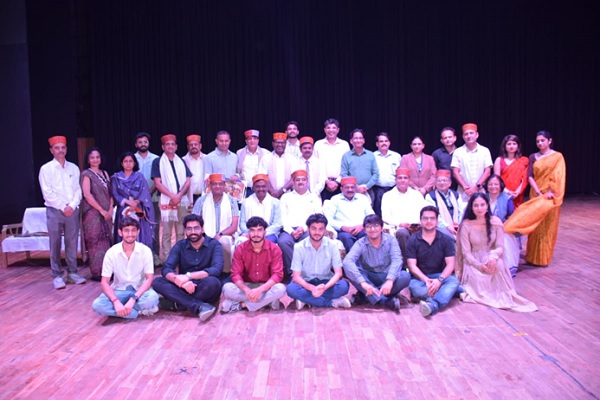
::Get to Know TSI Member::
Colonel (Dr.) Rita Dadwal has a distinguished career spanning over three decades, marked by her dedication and service in the Army Medical Corps.
She has extensive experience in Primary care and Emergency Medicine, and hospital administration, both in military and civilian healthcare settings. During her 30-years tenure in the Army Medical Corps, Colonel Dadwal commanded a Field Hospital in high altitude Sikkim in 2002. In this challenging environment, she demonstrated remarkable ingenuity by saving four myocardial infarction casualties using primitive telemedicine techniques. Despite the absence of modern tools Colonel (Dr.) Rita Dadwal (Veteran) like WhatsApp and video calls, she and her team successfully communicated with medical specialists via telephone, interpreted ECGs, and administered thrombolysis. Qualifications: MBBS, DCh, MD, DNB (Anaesthesia and Critical Care) After retiring from the army in 2012, Colonel Dadwal transitioned to the private sector, where she served as the Professional Membership: Hospital Head and Chief Administrator in two hospitals until 2017. Her commitment to advancing her medical Member of Indian Academy of expertise led her to clear NEET in 2018 and join the MD Anaesthesia program a Dr. RPGMC, from which she graduated in 2021. She further enhanced her qualifications by completing her DNB in Anaesthesia in December in 2021. To fulfil the two year post-graduate bond with the state government, Colonel Dadwal worked as a Medical Anesthesia Officer in Anaesthesia at CH Nurpur for three months and at Dr. RPGMC Kangra until October 2023. Currently, she is associated with the Sri Sathya Sai Sewa Samiti in Dharamshala, where she is dedicated to training bedside assistants.
This video captures her inspiring personal story of what drove her towards post-graduations at a age when many of us may think of retirement. Her motivation to keep learning, enhancing her knowledge and serving patients shows her unwavering commitment to serving her patients.
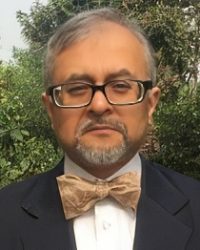
Systemized Nomenclature of Medicine (SNOMED) Beginner’s Guide: Terminology System Demystified
Prof. Dr. Suman Bhusan Bhattacharyya
MBBS, MBA, FCGP (Hon.) | TSI Life & Fellow Member
SNOMED is a controlled medical vocabulary that uniquely codes (identifies), the unique meaning behind a term. The terms covered range from abscess to zygote – signifying the entire range of healthcare-relevant terms.
To make it human-understandable, a human-readable description is assigned to it that explains the meaning in a simple manner. This description is called Fully Specified Name or FSN for short. A suffix of the semantic tag enclosed in parenthesis is added to the FSN. This represents the domain of the concept and helps in disambiguating it from homonyms, acronyms, etc. Each unique meaning is assigned a unique machine-processable identifier that has a check digit for integrity check by the machine on its own. The meaning is a machine-processable and machine-interpretable information model. The relationships that make up the meaning is what makes all the SNOMED magic happen.
The term’s meaning is an information model, based as a set of inter-related relationships that are encoded using pre-defined concepts. This results in the entire meaning to be machine-processable with even the attribute and values having their concepts defined as machine-processable meanings. The definition consists of at least one “is a” subtype relationship and zero to many attribute relationships. These relationships make it possible to focus precisely on one concept or a group of them.
Every concept has one or more synonymous terms attached to it. The rule is that the terms must have the same meaning as the concept’s definition. These terms can be in any language.
Due to the machine-processability and machine-interpretability of the concepts, they are semantically interoperable. Since the code is able to handle terms belonging to many languages, the language of any clinical document becomes immaterial. A record written in US English can be readily rendered in GB English (the spellings in many instances are different) or Spanish or French or Dutch or Swedish without any additional programming.
SNOMED is the key towards having a life-long digital health record of an individual a reality.
For more information youtube video link: https://www.youtube.com/watch?v=XqJ7wEP_Fbo&t=941s
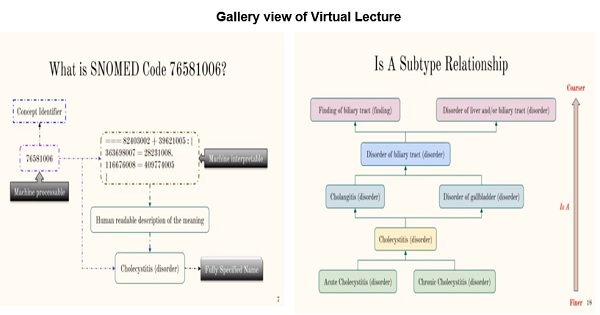
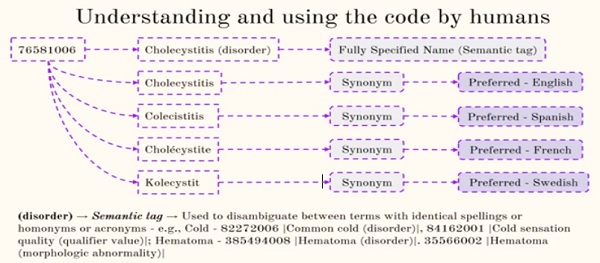
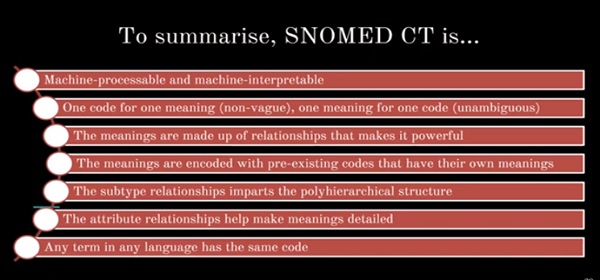
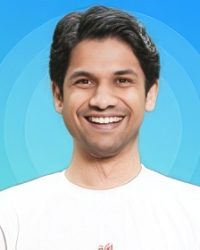
Wellness Startup, Habuild, celebrates International Yoga Day by setting a World Record for performing Yoga with 5,99,162 people
Mr. Saurabh Bothra,
CEO & Certified yoga instructor,
Habuild
The brand invited people of all age groups to take up a 21-day free yoga challenge ahead of International Yoga Day starting from June 10, 2024.
June 21, 2024, Nagpur / New Delhi – As the nation celebrated the 10th International Yoga Day, Nagpur-based startup, celebrated and created a new World Record on Friday, 21st June, 2024. The habit-building wellness platform that focuses on consistency, set a World Record by making 5,99,162 people perform yoga asanas with them. To generate excitement and encourage maximum number of people to be a part of this eventful celebration, the brand conducted a 21-Day Free Yoga Challenge ahead of the International Yoga Day to add to the spirit of the day.
The aim of the habit building and holistic wellness brand, Habuild, is to inspire people from different walks of life to come together in maximum numbers and make yoga a habit. The free yoga option is to encourage people to be motivated to work out and decide to go in for a subscription only once they are sure about being regular. It will be globally recognized as the premier habit-building program, facilitating genuine transformations. With world records and a growing community, Habuild is steadfast in its mission. The company also runs a Diabetes Reversal program, offering affordable and accessible guidance for people with diabetes. They plan to launch a separate Knee Relief Program in the near future. In addition to its programs for adults, Habuild has introduced yoga programs for kids, tailored to their unique needs and interests. This move demonstrates the platform’s dedication to innovation and community service. Not just this, the brand intends to plant 25,000 trees owing to the number of referrals received. The team promised to plant 1 tree for every 5 referrals received prior to the day of creating the Yoga Day World Record. The success of Habuild is a testament to the dedication and passion of its founders, Saurabh Bothra, Trishala Bothra, and Anshul Agrawal, along with the support of a vibrant community.
Habuild is my brain child that intends to change the habits of the masses towards healthy living. My ambition is to make yoga a daily routine in every household across cities. This vision is encapsulated in the slogan #HarGharYoga, aims to make yoga a common practice in every home.
My journey into yoga began not with a desire to get fit but out of sheer curiosity. At the age of 20, I started practicing Surya Namaskar regularly and attended classes to deepen my knowledge whenever possible. Slowly, my love for Yoga kept increasing! After completing my education at IIT, I decided to follow my passion: teaching yoga. Between 2014 and 2020, I traveled across India, volunteering and teaching in cities like Mumbai, Kanpur, Banaras, Delhi, and Pune. With a decade of experience, I founded Habuild, along with two driven cofounders, Trishala Bothra and Anshul Agrawal.
I was happy to see the response on world Yoga day and this time, my expectations truly were surpassed. Nearly six lakh people joined the challenge, with around two lakh participants showing up for the morning batch alone at the early 6:30 am!
I am immensely grateful to everyone who participated in the challenge shared the challenge details with their loved ones, and continue to trust us. It is because of them that we could make this world record possible.
Yoga is creating a significant global impact, and now is the time to make it a habit. Our ultimate goal is to make yoga a household staple in the world of exercise. The theme for Habuild’s 21-day free yoga challenge is #HarGharYoga, a reflection of our mission to make yoga accessible to everyone. This is just the beginning!!”
The ongoing 21-Day Free Yoga Challenge is getting a lot of traction from across the world with Yoga enthusiasts are enrolling from diverse realms of life. Additionally, the wellness brand has grown exponentially in the last 1 year with an increased interest from regions such as Mumbai, Bangalore, Pune, Delhi along with many Tier 2 and 3 cities. The participants in the historic event came from 92 different countries across the globe, especially North America, Singapore, Middle East to name a few. This ongoing yoga challenge commenced on June 10, 2024 and it remains open to all participants, free of cost, until June 30, 2024.
The official team of World Records Union invigilated the prestigious event. The officials declared that 5,99,162 participants were part of the event and celebrated the importance of Yoga and well-being on a global scale.
Glimpses of the event
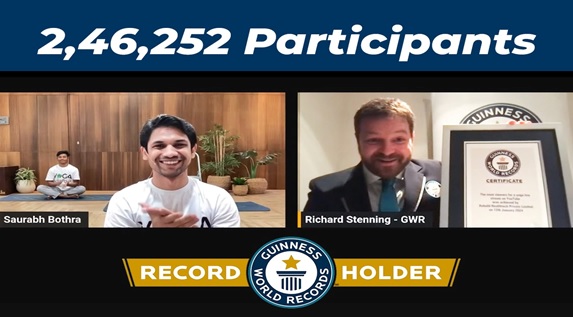
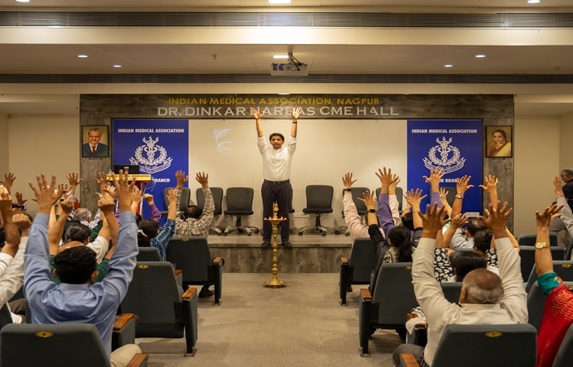
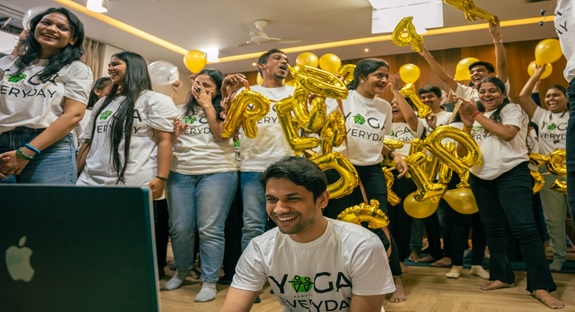
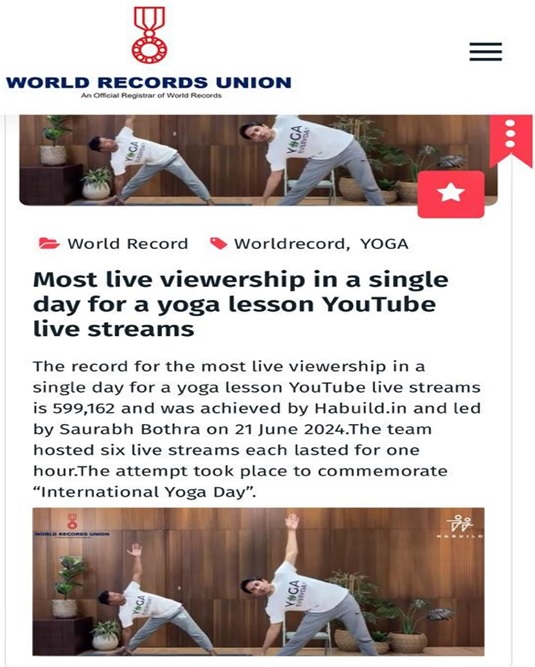
::ANNOUNCEMENTS::

Health Technology Assessment: Bridging Research and Policy
Health technology assessment (HTA) plays a pivotal role in shaping modern healthcare systems. As new interventions and technologies emerge, their impact on health remains uncertain. HTA steps in as a systematic and multidisciplinary transparent evaluation process, shedding light on the properties of health technologies and interventions.
Although HTA is critical for policy and funding decisions in healthcare HTA is a relatively new area and there are many misconceptions. For example:
a) HTA is only about technology – It actually covers pharmaceuticals, medical equipment, diagnostics, medical procedures, even administrative decisions.
b) HTA is only about costs – It is a holistic assessment which goes beyond mere clinical effectiveness and economics; it includes intended and unintended consequences of any medical intervention and its social and ethical implications.
Healthcare providers have long felt the need for a programme to help them navigate the complex processes involved in HTA. Similarly, industry, startups and innovators, who are usually focused on technical aspects, need to understand how policy decisions are taken for uptake of their products.
AHA, in collaboration with KIHT and AMTZ, has endeavoured to meet this need through this intense course in HTA. Participants will also get an opportunity to learn from distinguished faculty and policy-makers from ICMR, DHR, NHSRC and AFMC.
Save the date: 27-28 July 2024 (Sat-Sunday)
For more details contact: Email: [manageracademics@ahaindia.org]
Telemedicine – News from India & Abroad
AI’s Role in Detecting Osteoporosis Revealed
Osteoporosis, often dubbed the “silent disease” due to its challenging early detection, may soon benefit from predictive artificial intelligence……Readmore
AI Breakthrough: Accelerating Effective Antibiotic Therapy for Sepsis
Sepsis poses a life-threatening infection complication, leading to 1.7 million hospitalizations and 350,000 deaths annually in the U.S……….Readmore
From Science Fiction to Reality: AI as a Companion!
In the face of a prevalent global loneliness epidemic, a robotics expert proposes that Artificial Intelligence ( AI) technology……Reademore
Telehealth Nurse Case Managers Reduce Blood Pressure in Minority Stroke Survivors
Low-income Black and Hispanic stroke survivors with uncontrolled hypertension experienced a more than two-fold reduction in
systolic blood pressure……. Readmore
Telemedicine Practice Guidelines – A Foundation Course for RMPs by TSI Faculty
To know more about the Telemedicine Foundation Course click on the link below:
https://tsitn.org/tpg-course/
TSI invites all the TSI Chapters and Members to submit information on their upcoming Webinar or Events (50 words), News related to Telemedicine (200 words) or short articles (500 words) for the monthly e-newsletter.Guidelines for submission to TSI Newsletter-
- Report can be from 500 to 600 words
- Report Should be relevant to Telemedicine or Medical Informatics
- No promotion of self or any product
- Avoid plagiarism
- All references should be included
- Provide any attributions
- Visuals are welcome including video links
- Send full authors name, degrees, affiliations along with a passport sized photograph of good resolution. If multiple authors only main author photo to be sent.
Submission may be sent to – tsigrouptn@gmail.com
Editors reserve the rights for accepting and publishing any submitted material.
Editor in Chief – Dr. Sunil Shroff
Editors – Dr. Senthil Tamilarasan & Dr. Sheila John
Technical Partner- https://www.medindia.net


